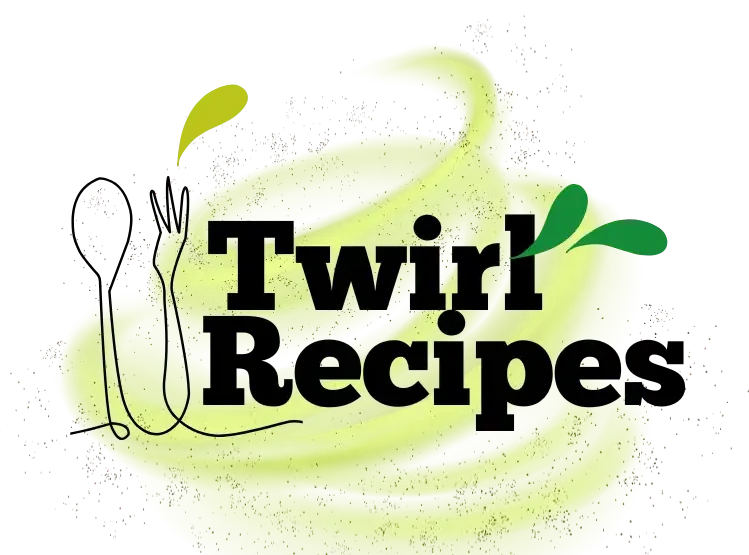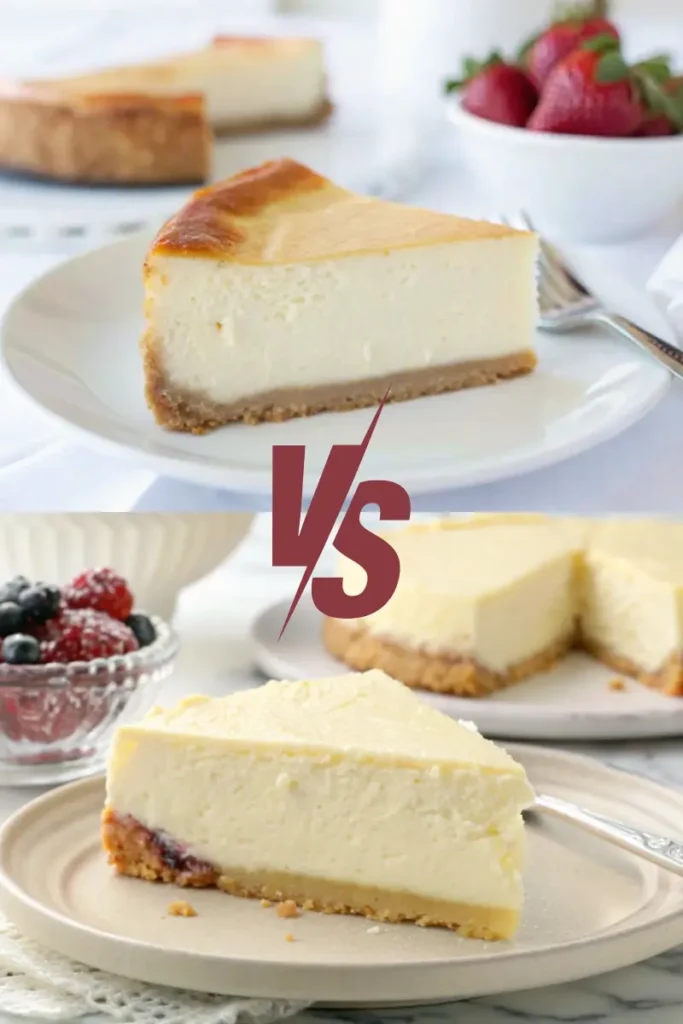Cheesecake lovers, gather around! Have you ever wondered why some cheesecakes are velvety and rich while others are airy and light? Well, today, we’re diving fork-first into the delicious debate of baked vs. continental cheesecake. From their unique textures to how they’re made, we’ll explore everything you need to know about these two delightful desserts. So, let’s get ready to satisfy your sweet tooth and level up your cheesecake game!
JUMP TO
Cheesecake 101 – The Basics
What is Cheesecake?
Ah, cheesecake—a dessert that’s loved around the globe! This indulgent treat is a magical mix of cream cheese, sugar, and other delightful ingredients. But did you know cheesecakes have been around since ancient times? Yep! They date back to the Greeks, who served them as a source of energy during the Olympics. Over time, cheesecakes evolved, with every culture adding its own spin.
A Timeless Dessert
Today, cheesecakes have countless variations, from the rich and dense New York-style cheesecake to the light-as-air Japanese souffle. Whether it’s a special occasion or a casual sweet craving, there’s a cheesecake for everyone!
Types of Cheesecakes Around the World
Cheesecake has a passport of its own, with each region giving it a unique twist:
- New York Cheesecake: The classic baked cheesecake, dense and creamy.
- Japanese Cotton Cheesecake: Fluffy and airy like a cloud.
- Basque Cheesecake: Dark, caramelized, and perfectly imperfect.
- Ricotta Cheesecake: An Italian gem with a subtle texture.
- Continental Cheesecake: No baking required! Light, mousse-like, and perfect for summer.
From American classics to European elegance, every type of cheesecake brings its own charm. What’s your favorite? Let’s explore how these desserts differ in detail!
Baked vs Continental Cheesecake: The Key Differences
Let’s roll up our sleeves and uncover what makes baked and continental cheesecakes so distinct. While both are undeniably delicious, they’re as different as night and day when it comes to preparation, texture, and flavor.
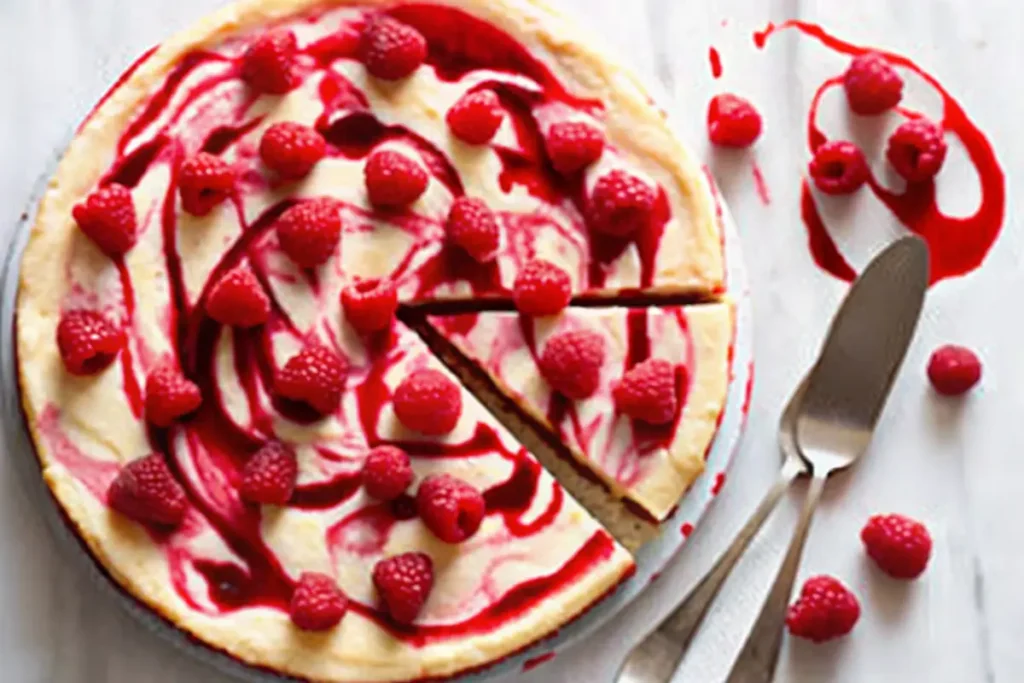
What is a Baked Cheesecake?
Baked cheesecake is the crème de la crème of desserts, perfect for those who adore indulgent, custard-like treats.
Preparation and Cooking Method – Baked Cheesecake
Baking a cheesecake requires a bit of patience and a trusty oven. The batter—rich with eggs and cream cheese—is poured into a crust-lined pan and baked slowly, often using a water bath (also called a bain-marie) to prevent cracking. This technique ensures the cheesecake cooks evenly and retains its signature smooth texture.
Texture and Flavor of Baked Cheesecake
The result? A dense, velvety masterpiece with a luscious, creamy bite that’s just heavenly. Each forkful melts in your mouth, leaving behind subtle hints of vanilla and cream.
Ingredients That Define a Baked Cheesecake
The magic of baked cheesecake lies in its simplicity:
- Cream cheese: The foundation for its rich texture.
- Eggs: Provide structure and give the dessert its custard-like consistency.
- Heavy cream or sour cream: For extra creaminess.
- Vanilla extract: Adds a delightful aroma.
- Sugar: Sweetens the deal!
The classic baked cheesecake is all about balance—rich yet not overpowering, sweet but never cloying.
What is a Continental Cheesecake?
If baked cheesecake is a warm hug, continental cheesecake is a refreshing breeze. No oven, no water bath—just chill and serve!
No-Bake Preparation – Continental Cheesecake
Making a continental cheesecake is delightfully simple. The batter, a light mix of cream cheese, whipped cream, and sometimes gelatin, is poured into a crust and chilled until set. It’s a go-to for those who prefer a hands-off, fuss-free dessert.
Texture and Flavor of Continental Cheesecake
The texture is mousse-like—fluffy, airy, and oh-so-light! Each bite feels like a gentle cloud on your palate, making it perfect for warm days or when you want something less rich.
Key Ingredients in Continental Cheesecake
What makes a no-bake cheesecake tick?
- Cream cheese: The creamy star of the show.
- Whipped cream: Adds volume and lightness.
- Gelatin (optional): For a firmer set.
- Sugar and flavorings: Sweetened and often flavored with lemon zest or berries.
This type of cheesecake lets the flavors shine without overpowering your taste buds.
Side-by-Side Comparison Table: Baked vs Continental Cheesecake
| Aspect | Baked Cheesecake | Continental Cheesecake |
|---|---|---|
| Cooking method | Requires baking in an oven, often with a water bath. | No baking; chilled until set. |
| Texture | Dense, rich, and creamy. | Light, fluffy, and mousse-like. |
| Ingredients | Eggs, cream cheese, heavy cream. | Cream cheese, whipped cream, gelatin. |
| Flavor intensity | Bold and rich. | Subtle and refreshing. |
| Occasions | Perfect for formal events or holidays. | Ideal for summer or quick desserts. |
Why Choose One Over the Other?
When it comes to the baked vs. continental cheesecake debate, choosing between the two isn’t just about preference—it’s also about the occasion, mood, and what you’re craving at the moment. Let’s explore when and why each type might be the better choice for your dessert table!
Baked Cheesecake: When and Why?
Baked cheesecakes are like the grand centerpiece of desserts—luxurious, decadent, and perfect for making a statement.
- Special Occasions: If you’re hosting a formal dinner, celebrating a holiday, or preparing a dessert for a wedding, baked cheesecake is your go-to. Its rich, creamy texture and classic presentation scream sophistication.
- Rich Flavor Fans: Those who love bold flavors and a dense, custard-like texture will fall head over heels for baked cheesecake. It’s perfect for savoring slowly, bite by indulgent bite.
- Great for Layered Toppings: A baked cheesecake’s firm texture makes it ideal for elaborate toppings like fruit compotes, chocolate ganache, or caramel drizzle without worrying about it collapsing.
Continental Cheesecake: When and Why?
If baked cheesecake is the star of a grand gala, continental cheesecake is the effortless charmer at a casual get-together.
- Quick and Easy Desserts: When you’re short on time or just don’t want to fuss with the oven, continental cheesecake is a lifesaver. It’s easy to prepare, and the no-bake method makes it beginner-friendly.
- Light and Refreshing: On warm, sunny days, a fluffy continental cheesecake feels like the perfect dessert—cool, creamy, and not too heavy. Add some fresh fruit, such as strawberries, and you’ve got summer on a plate!
- Kid-Friendly and Fun: Kids love the light texture, and it’s simple enough to let them help in the kitchen. Plus, it’s customizable with fun toppings like crushed cookies, sprinkles, or whipped cream.
No matter which cheesecake you choose, both bring something special to the table. The beauty is, you can pick based on your mood or the occasion—and there’s never a wrong answer when it comes to cheesecake!
How to Make Each Type of Cheesecake
Ready to whip up your very own cheesecake? Whether you’re team baked or team continental, these step-by-step recipes will guide you to dessert success. Let’s dive in!
Recipe for a Perfect Baked Cheesecake
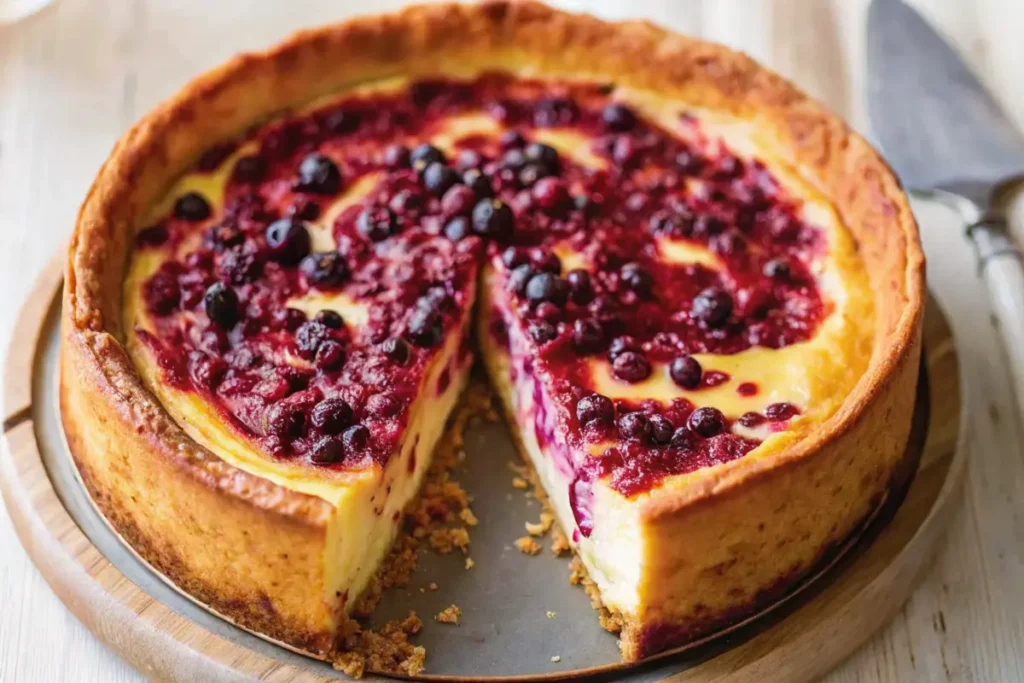
Ingredients Needed
Here’s what you’ll need to create a classic, creamy baked cheesecake:
- For the crust:
- 2 cups of crushed graham crackers or digestive biscuits
- 1/3 cup of melted unsalted butter
- 2 tablespoons of sugar (optional for added sweetness)
- For the filling:
- 3 (8-ounce) packages of cream cheese, softened
- 1 cup granulated sugar
- 1 teaspoon vanilla extract
- 3 large eggs
- 1/2 cup sour cream
- 1/4 cup heavy cream
Step-by-Step Instructions
- Prepare the Crust:
Combine the crushed graham crackers, melted butter, and sugar in a bowl until the texture resembles wet sand. Press the mixture firmly into the bottom of a springform pan. Bake at 325°F (160°C) for 8–10 minutes, then set aside to cool. - Make the Filling:
- Beat the softened cream cheese and sugar together until smooth and creamy.
- Add the vanilla extract and mix well.
- Incorporate the eggs one at a time, beating on low speed to avoid overmixing.
- Gently fold in the sour cream and heavy cream until just combined.
- Assemble and Bake:
- Pour the filling over the crust, smoothing the top with a spatula.
- Place the pan in a larger baking dish filled with an inch of hot water to create a water bath.
- Bake for 55–65 minutes at 325°F (160°C), or until the edges are set and the center jiggles slightly.
- Cool and Chill:
- Turn off the oven and leave the cheesecake inside with the door slightly open for 1 hour.
- Remove from the oven, cool to room temperature, and refrigerate for at least 4 hours (overnight is best!).
Common Mistakes to Avoid
- Overmixing the batter can introduce air bubbles, leading to cracks.
- Skipping the water bath may result in uneven cooking.
- Don’t rush the cooling process; it’s essential for setting the cheesecake properly.
Recipe for a Continental Cheesecake
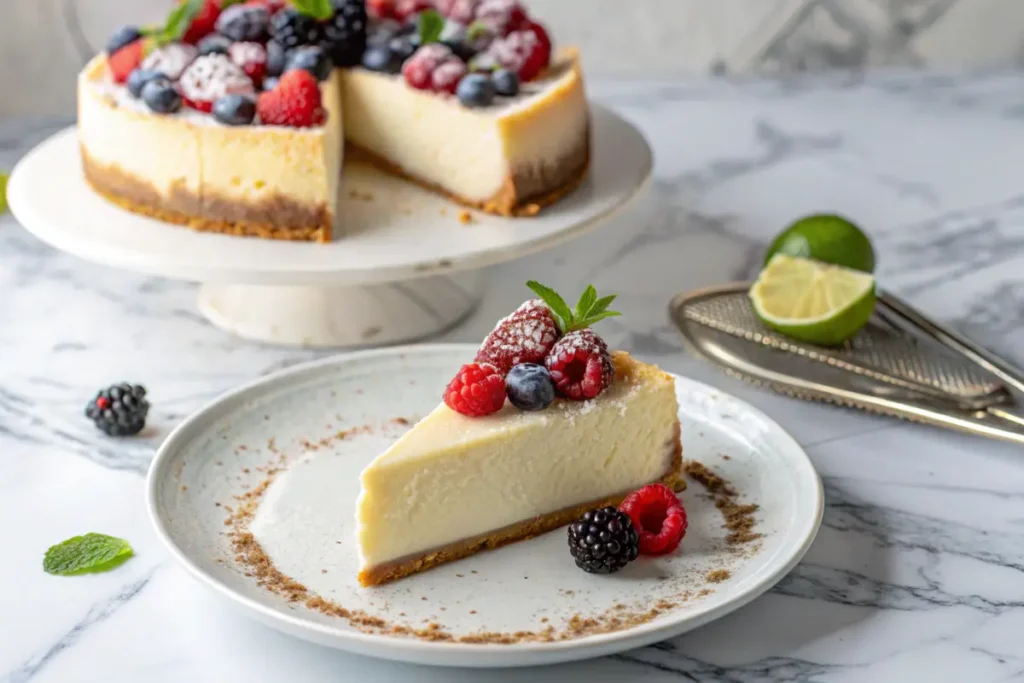
Ingredients Needed
Here’s what you’ll need for a no-bake cheesecake that’s light and fluffy:
- For the crust:
- 2 cups of crushed digestive biscuits or graham crackers
- 1/3 cup melted butter
- 2 tablespoons sugar
- For the filling:
- 2 (8-ounce) packages of cream cheese, softened
- 1 cup powdered sugar
- 1 teaspoon vanilla extract
- 1 cup heavy whipping cream, whipped to stiff peaks
- 1 tablespoon gelatin (optional for firmer texture)
- 2 tablespoons warm water (to dissolve gelatin)
Step-by-Step Instructions
- Prepare the Crust:
Mix the crushed biscuits, melted butter, and sugar until combined. Press the mixture into the bottom of a springform pan and refrigerate for 15–20 minutes to set. - Make the Filling:
- Beat the cream cheese and powdered sugar together until smooth and creamy.
- Add the vanilla extract and mix well.
- If using gelatin, dissolve it in warm water and mix it into the filling.
- Gently fold the whipped cream into the cream cheese mixture until fully incorporated.
- Assemble and Chill:
- Pour the filling over the chilled crust, spreading it evenly.
- Refrigerate for at least 4 hours, or until fully set.
- Decorate and Serve:
Top with fresh fruit, chocolate shavings, or a drizzle of caramel before serving.
Common Mistakes to Avoid
- Overmixing the whipped cream can cause it to lose its airy texture.
- Skipping the chilling step may result in a runny filling.
- Avoid overloading the topping, as the lighter texture may collapse under too much weight.
Whether you prefer the rich, creamy decadence of a baked cheesecake or the light, mousse-like texture of a continental cheesecake, both recipes are guaranteed crowd-pleasers. Time to grab your ingredients and get baking—or chilling!
Tips for Perfect Cheesecake Every Time
Crafting the perfect cheesecake might seem like a daunting task, but with the right tips and tricks, you’ll be whipping up show-stopping desserts in no time. Whether you’re making a baked or continental cheesecake, these pro tips will help you avoid common pitfalls and ensure your cheesecake turns out flawless every time.
Pro Tips for Both Varieties
- Use Room Temperature Ingredients
Cold cream cheese or eggs can result in a lumpy batter. For a silky-smooth texture, let your ingredients sit at room temperature for 30–60 minutes before you start. - Avoid Overmixing the Batter
Overmixing introduces too much air, which can cause baked cheesecakes to crack or continental cheesecakes to lose their lightness. Mix until just combined for the best results. - Master the Crust
- Press the crust mixture firmly into the pan to create a sturdy base.
- For baked cheesecakes, pre-baking the crust for 8–10 minutes helps prevent sogginess.
- Chill the crust for continental cheesecakes to ensure it sets properly before adding the filling.
- Chill, Chill, Chill
Patience is key! Cheesecakes need adequate chilling time for the flavors to meld and the texture to set. Ideally, refrigerate for at least 4 hours, though overnight is even better. - Prevent Cracks in Baked Cheesecakes
- Bake using a water bath to maintain consistent heat and prevent drying out.
- Avoid opening the oven door while baking, as sudden temperature changes can lead to cracks.
- Experiment with Toppings
Cheesecake is the perfect blank canvas. Enhance it with:- Fresh fruits like berries, mangoes, or kiwis.
- Drizzles of chocolate, caramel, or honey.
- Crunchy toppings like nuts or crushed cookies.
- Knife Trick for Slicing
For clean slices, dip your knife in warm water and wipe it clean after each cut. This ensures every slice looks as beautiful as it tastes!
Bonus Tip: Storage Matters
Store your cheesecake in an airtight container in the refrigerator to prevent it from absorbing other flavors. Baked cheesecakes can last up to 5 days, while continental cheesecakes are best enjoyed within 3–4 days.
By keeping these tips in mind, you’ll soon become a cheesecake pro, impressing friends and family with your creamy creations. Whether you’re baking or chilling, perfection is just a few steps away!
Health Considerations
Cheesecake is undeniably delicious, but how does it fit into a healthy lifestyle? Let’s take a closer look at the nutritional aspects of baked and continental cheesecakes to help you enjoy this dessert responsibly. With a few simple tweaks, you can indulge in your favorite treat guilt-free!
Is Cheesecake Healthy?
Let’s be real—cheesecake isn’t a “health food,” but it can absolutely be part of a balanced diet. Both baked and continental varieties are rich in calories due to their cream cheese and sugar content. However, they also offer small amounts of protein and calcium. The key is portion control and mindful eating.
Nutritional Comparison: Baked vs. Continental Cheesecake
- Baked Cheesecake:
- Higher in calories and fat due to ingredients like heavy cream and eggs.
- Denser texture means a smaller slice can satisfy cravings.
- Often contains less sugar than continental versions.
- Continental Cheesecake:
- Generally lighter in calories per serving, thanks to whipped cream and optional gelatin.
- Higher sugar content for a sweeter taste.
- Its airy texture can make it easy to eat larger portions.
Healthier Ingredient Substitutions
Want to enjoy cheesecake with fewer calories and more nutrients? Try these swaps:
- For the crust:
- Use almond flour or oats instead of graham crackers for added fiber.
- Replace butter with coconut oil for a lighter alternative.
- For the filling:
- Swap full-fat cream cheese for reduced-fat or Neufchâtel cheese.
- Use Greek yogurt or light sour cream in place of heavy cream.
- Sweeten with natural alternatives like honey, maple syrup, or stevia.
Portion Control Tips
- Stick to a small slice (about 1/12th of a 9-inch cheesecake) to keep calories in check.
- Pair your cheesecake with fresh fruits or a small salad for a more balanced snack.
- Share your cheesecake creations with friends and family to avoid overindulging.
Cheesecake for Special Diets
With so many dietary preferences today, cheesecake can be adapted to fit almost any lifestyle:
- Gluten-Free: Use gluten-free biscuits or nut-based crusts.
- Vegan or Dairy-Free: Substitute cream cheese with plant-based alternatives like cashew cream or coconut cream.
- Keto-Friendly: Replace sugar with erythritol and use almond flour for the crust.
By making thoughtful ingredient choices, cheesecake can become a satisfying treat that aligns with your health goals. So go ahead and treat yourself—you’ve earned it!
Frequently Asked Questions – Baked vs. Continental Cheesecake
What are the three types of cheesecake?
Cheesecakes can be broadly categorized into three popular types:
– Baked Cheesecake: This is a dense and creamy dessert that’s oven-baked. It typically includes ingredients like eggs and heavy cream, which give it a custard-like texture. For example, the New York-style cheesecake is one of the most iconic variations.
– Continental Cheesecake (No-Bake Cheesecake): On the other hand, this type is a light and mousse-like cheesecake that sets in the fridge. It often relies on whipped cream or gelatin to achieve its structure, making it perfect for warmer days or when baking isn’t an option.
– Regional Variations: Additionally, there are unique types of cheesecakes from around the world. For instance, Basque cheesecake is known for its burnt top, Japanese cheesecake is fluffy and airy, and ricotta cheesecake is light with a slightly grainy texture.
Is sour cream or heavy cream better for cheesecake?
It depends on the texture and flavor you’re aiming for:
– Sour Cream: Adds tanginess and helps create a denser, creamier texture, making it ideal for baked cheesecakes.
– Heavy Cream: Contributes richness and a lighter texture, often preferred for continental or no-bake cheesecakes.
What are the three types of cheesecake?
As highlighted earlier, the three main types are baked, continental (no-bake), and regional variations. Each offers a unique flavor and texture, catering to a wide variety of preferences.
